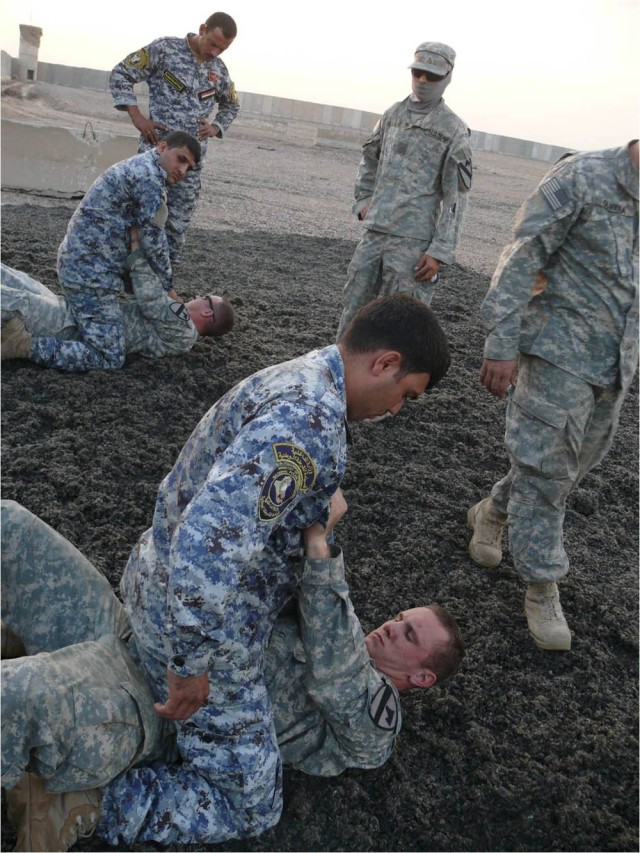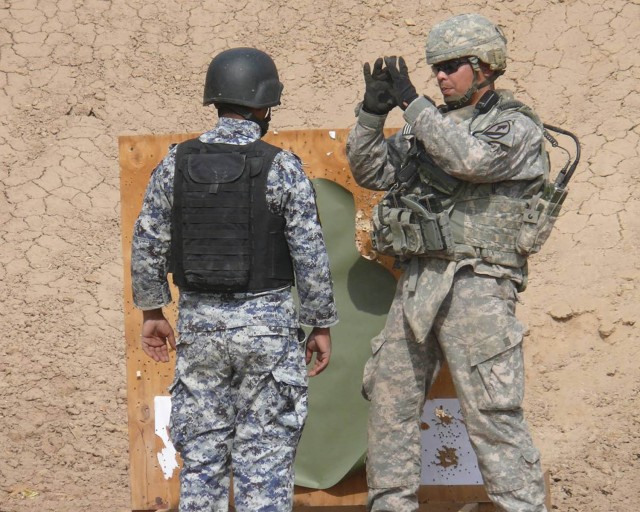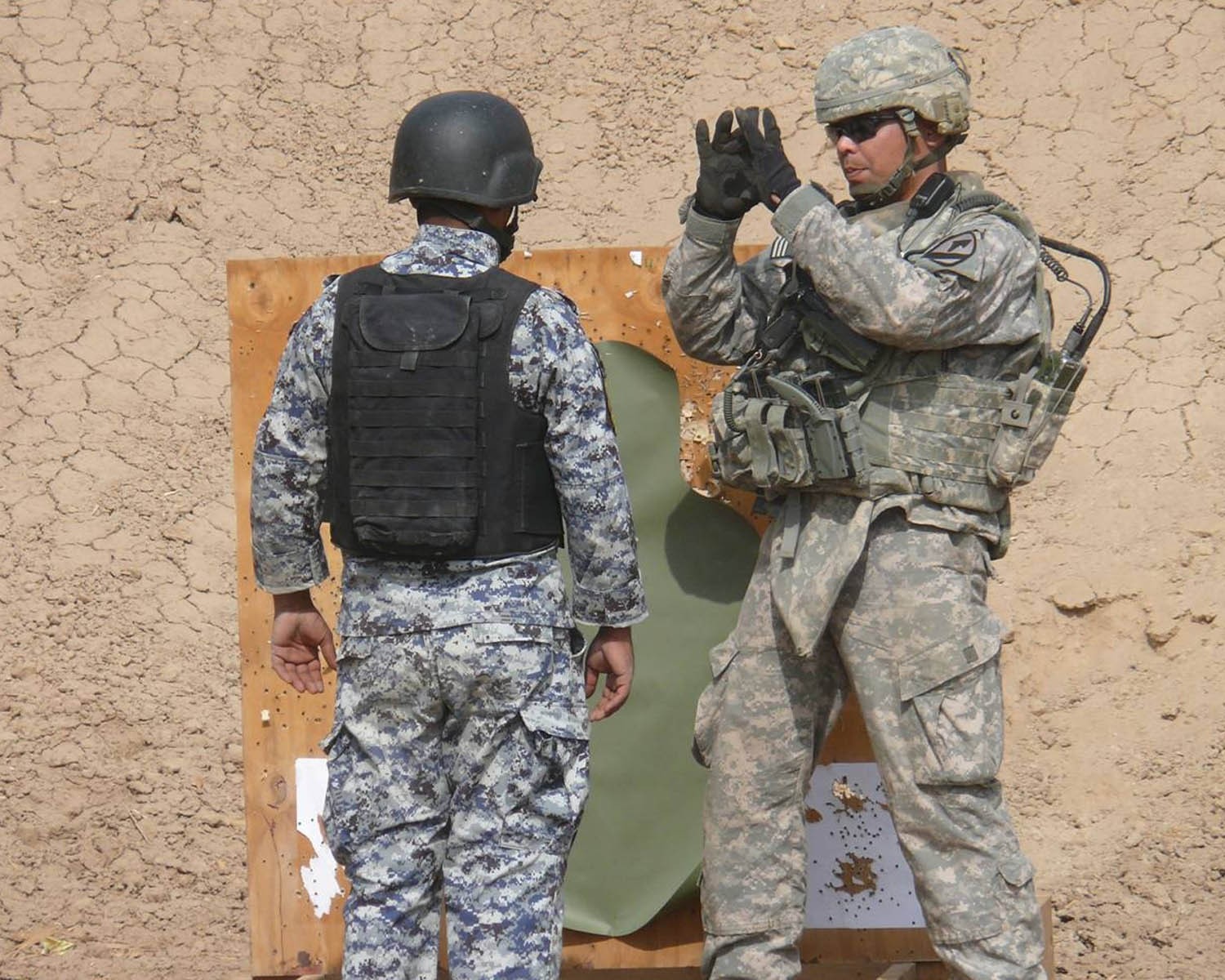BAGHDAD - One of U.S. forces' main roles in Iraq is training, assisting and supporting the Iraqi Security Forces securing their country.
Soldiers in 1st Brigade Combat Team, 1st Cavalry Division have fully embraced their teaching role and are holding several academies throughout their operating environment teaching a variety of tools and tactics.
Soldiers from 1st Squadron, 7th Cavalry Regiment, conducted non-lethal force training and basic rifle marksmanship for their 2nd Battalion, 2nd Brigade, 1st Federal Police Division partners during the first week of November at Joint Security Station Istiqlal.
The Fort Hood, Texas-based troopers conducted combatives training with a specialty platoon of the Iraqi Federal Police. The emphasis on non-lethal training gives the policemen time and space to take control of a physical confrontation without raising a weapon. While all policemen who carry weapons have the ability to use lethal force in the execution of their duties, there are circumstances where non-lethal force is better.
First Lt. Mike Olvera, from San Benito, Texas, taught the Iraqis new techniques for fighting on the ground; giving them simple, energy efficient methods for bringing a suspect to the ground, as well as submission holds which give them an advantage.
"You just hold on to them, and sit down," Olvera told them as he demonstrated a takedown. "You don't need to lift them up and wear yourself out. Use their weight against them," he said as he rolled on top of a Soldier who helped demonstrate.
After allowing them to practice the throws and submissions, Olvera had them stand up for some training with their individual weapons.
"Everyone knows that being shot by a weapon will stop someone," he told them, pointing to their AK-47s, "But you don't always have to use lethal force with a firearm. All of these moves can allow you to stop an opponent without ever pulling the trigger."
He then led them through a series of slashes, thrusts, and butt strokes used in bayonet fighting-techniques which can be used to deflect a knife attack, or to stop a charging attacker.
The Iraqi policemen practiced each movement aggressively, shouting for added emphasis.
The second part of the training consisted of a small arms firing range and teaching the policemen basic rifle marksmanship.
The block of instruction covered basic principles of marksmanship: steady position, breathing control and trigger squeeze to help each policeman consistently hit the same part of the target. The FPs learned how to load and clear the M4 rifle, as well as how to apply corrective actions if the weapon failed to fire.
"They learned pretty well," said Anadarko, Okla., native Sgt. Timothy Winn, an instructor. "When I was explaining how to perform immediate actions on a misfire, a few of them had some blank stares. But when we let them get some hands-on practice, they took right to it."
After preliminary instruction, the Iraqi FPs took their positions on the firing line and practiced their newly learned techniques. During each firing iteration, Winn and fellow instructor , Staff Sgt. John from Clovis, Calif., coached the pupils on their posture to improve their technique.
"I know that it seems cool to aim for the head," Hall told a group after their first time firing. "But you have to remember one thing. As the target gets further away, the head becomes a very small target. Aiming for the center of mass will be much more effective."
The training provided the Iraqi FPs a well rounded basic knowledge on both non-lethal and lethal tactics and tools.
According Olvera, at the end of the training, they walked away with their heads held high, knowing they could deal with a potential assailant.






Social Sharing